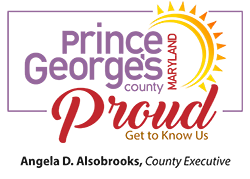

Climate Implementation Strategies
Climate Successes and Climate Dashboard
The County has made significant strides towards becoming more Climate Resilient. We took action to mitigate the effects of Climate Change and adapt to its effects such as extreme weather, flooding, and urban heat.
Learn about some of our successes below. Later this year, we will expand our dashboard, to continue engaging residents in tracking our progress towards the goals of the Climate Strategies.
Powering County Operations with Renewable Energy
OCS, in partnership with DoE Sustainable Energy, is installing 5 solar canopy systems on parking lots at 5 government sites. The systems will generate enough electricity to power over 400 homes, and all the energy generated must be provided to the County free of charge for 15 years.
Community Trees
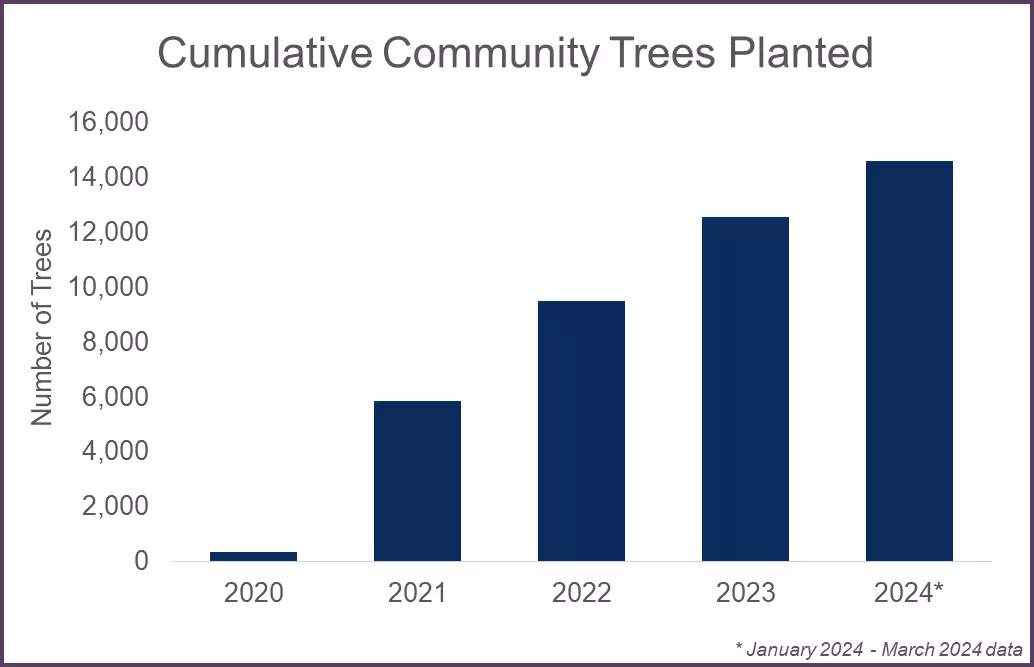
Description: Bar graph of Cumulative Urban Trees Planted from 2020 through 2024. The number of trees increases each year, with 2024 exceeding 14,000 trees. The 2024 bar includes January 2024 through March 2024 data only.
Community Trees
The County (DPWT, DOE, and MNCPPC) has increased the number of trees planted yearly to provide shade, cooling, and water management.
Waste Diverted
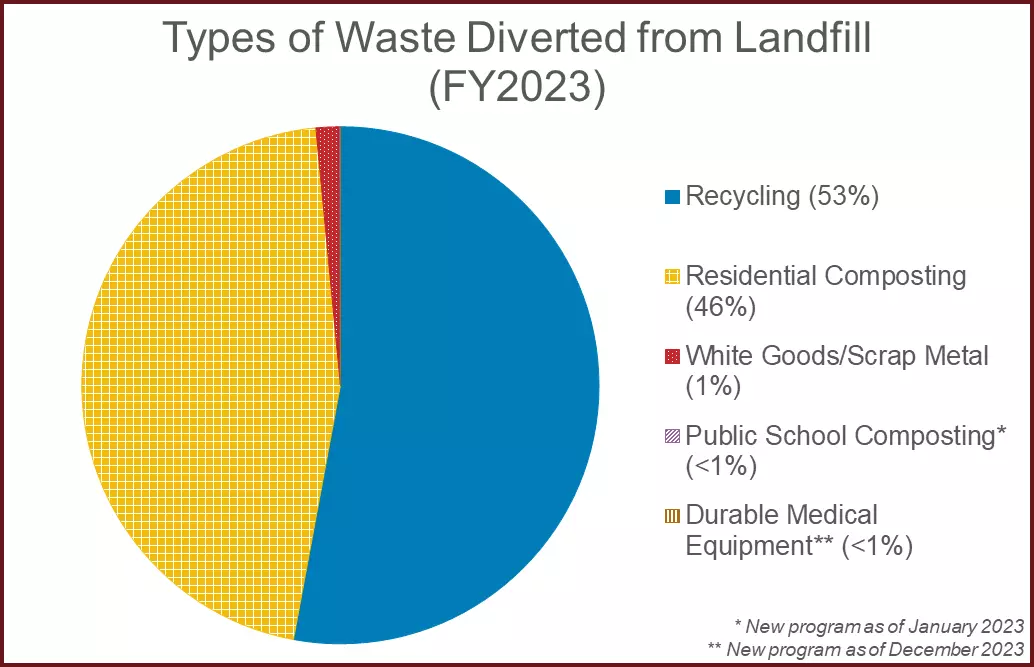
Description: A pie chart showing County waste-diversion data from 2023 reflecting a total of 144,233.75 tons of waste diverted from the landfill. This included 76,313.00 tons of recycling (inclusive of tires, curbside residential recycling, commercial recycling, and county-building recycling); 2127.29 tons of scrap metal/white goods; 65,735.83 tons of residential organic material that was composted; 57.01 tons of composting from our new public school composting program and 0.52 tons of medical equipment that was collected through the new durable medical equipment program that began in late 2023.
Waste Diversion
With an award-winning composting program, and the highest rates of recycling in the state of Maryland- Prince George’s County is a leader in reducing methane emissions by minimizing the waste breaking down in the landfill.
Food Waste in Public Schools
DoE and PGCPS have partnered, bringing food scrap composting to 26 schools to reduce food waste and promote food scrap composting. Students compost at lunch using the same tools they have at home, becoming composting "ambassadors” for their families. With the help of a grant for the development of education and outreach materials, DoE will train teachers and administrators who will later train others as the program grows.
Residential Climate Resilience
DoE's Sustainability Division has initiated a pilot project (Community SWM Blitz) through the Stormwater Stewardship Grant Program to build community-wide climate resilience and to address local flooding through focused outreach, community engagement, and installation of small to medium-scale green infrastructure practices. The practices that will be installed include those supported by the County’s Rain Check Rebate Program such as cisterns, rain gardens, conservation landscaping, and pavement removal. Alliance for the Chesapeake is leading this project in the Tantallon area of Ft. Washington.
Green Jobs
Thanks in part to the County's Economic Development Corporation (EDC), Blink Charging Co., a leading global electric vehicle charging equipment provider, opened its global headquarters at a 15,000-square-foot facility in Bowie, MD in 2024 and is constructing a new LEED Gold-certified 30,000-square-foot production facility also in Bowie. Blink’s decision to expand its operations in Prince George’s County reflected the County’s status as a leader in green, sustainable manufacturing and has made a significant commitment to the deployment of electric vehicle charging.
EV Charging
The County (DOE, OCS, MNCPPC) has completed the installation of 140 public-purpose EVCS on government properties (including municipals) throughout the county at locations such as park and recreational facilities, libraries, government office buildings, and Park and Rides.
Transit Fleet
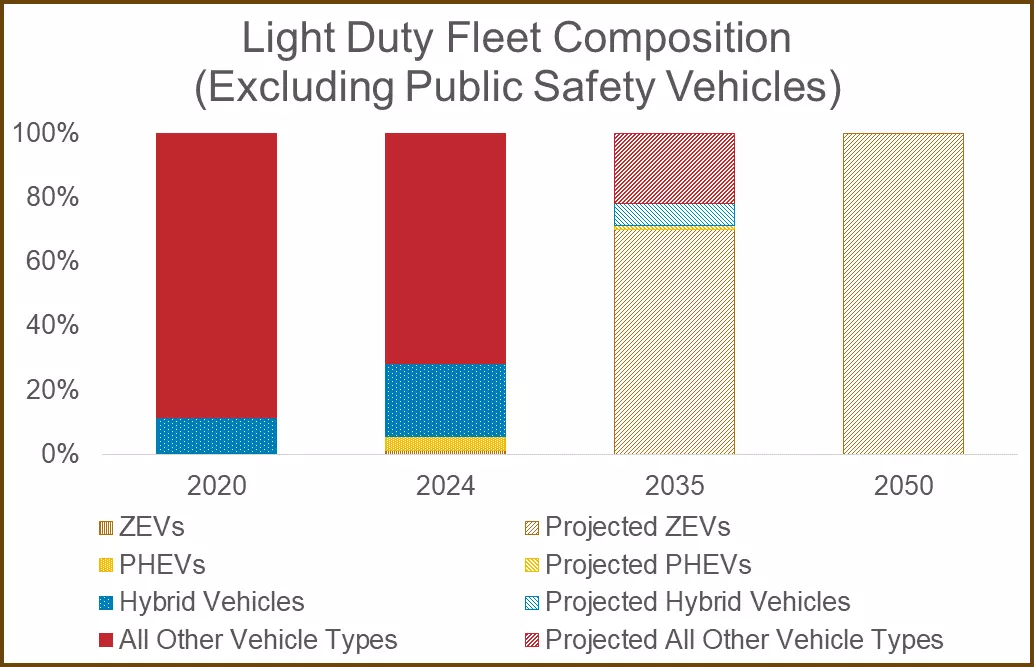
Description: Two sets of stacked bar graphs demonstrate the transition of 'Paratransit Ride-On Vehicles Type' and 'TheBus' Vehicle Types from non-EVs to EVs by 2050. Solid blue bars represent non-EVs, with red hatched bars indicating EVs, projecting an almost complete transition to EVs by 2050. By 2050, EVs are projected to make up nearly 100% of the Paratransit Ride-On vehicles. The second set, labeled 'TheBus' Vehicle Types, follows a similar pattern with blue bars for non-EVs and red hatched bars for EVs, projecting a complete transition to EVs by 2050.
Zero-Emission Buses
DPWT has deployed 12 fully electric buses and has funding for 26 additional zero-emission buses and the infrastructure to support them.
Local Government Fleet
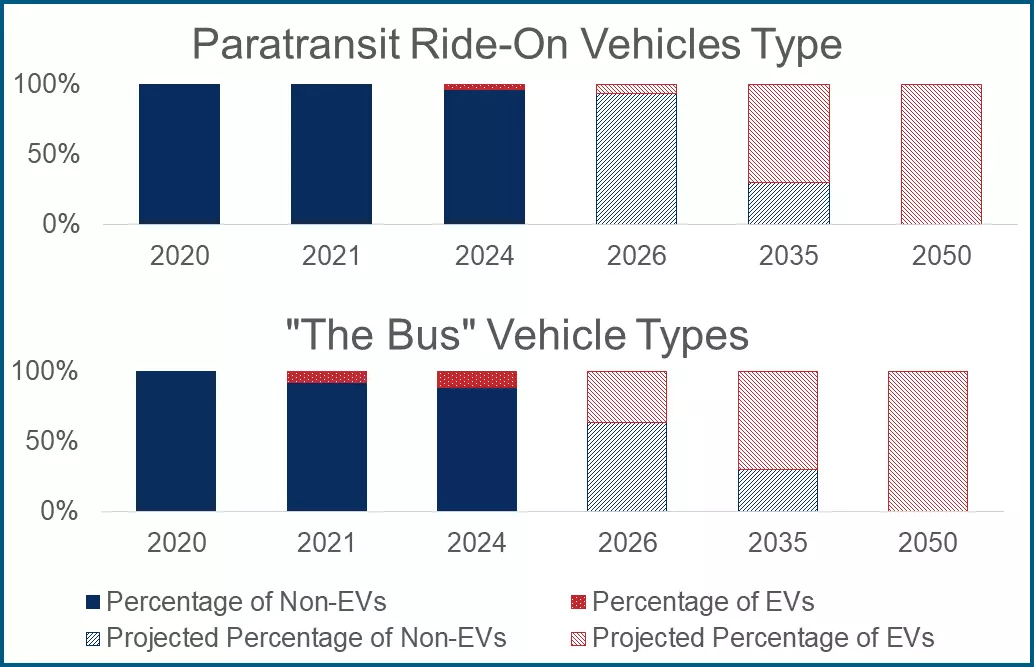
Description: A stacked bar chart outlines the 'Light Duty Fleet Composition (Excluding Public Safety Vehicles)' from 2020 to 2050, showcasing the initial presence of ZEVs (Zero Emission Vehicles), PHEVs (Plug-in Hybrid Electric Vehicles), Hybrid Vehicles, and All Other Vehicle Types in shades of beige, yellow, blue and red respectively. By 2050, it is projected that the majority will be ZEVs and PHEVs, shown in beige-hatched bars.
Increasing the Number of County Zero-Emission Vehicles
The County (OCS) has prioritized reducing fuel usage in vehicles, moving first to hybrid, and now to zero-emissions vehicles as county fleet vehicles are replaced.
Reducing Vehicle Miles Traveled (VMT) for County Employees
Since the COVID emergency sent staff home in March 2020, the County has made significant strides in creating a digital environment that supports minimizing VMT (and minimizing waste- another significant source of GHG), while delivering improved services. The County (OIT) has been awarded first place in the national “Digital Counties Survey” in its population category (500,000 to 999,000) in 2021, 2022, and 2023, demonstrating our continued commitment to improving services through technology.
Energy Efficiency Grants for Homeowners
As of February 2024, Sustainable Energy (DOE) has processed over 2,000 energy efficiency grant applications. The grant, coupled with EmPOWER Maryland energy incentives, assists residents with implementing energy-efficiency measures in nine designated neighborhoods, classified as Energy Resiliency Communities (ERCs).
Climate Progress and Emissions
View our climate dashboard of past County progress.
